Creating a Vision of Possibility as Professional Learners
by Lisa Thomas, Instructional Coach, Van Horne Elementary School
The district states that my responsibility as an instructional coach is to facilitate the implementation of state and district initiates and to build teacher capacity for effective instruction by establishing professional learning communities within our school. While the district has trained instructional coaches in a range of prescribed professional development protocols, the ways in which we each go about our work has largely been left up to us and our principals, and so the job looks a little different at each school. Our monthly meetings provide much needed chances to talk together about our developing roles within our schools and to share the ways that we are going about our work.
Month after month, I struggle to describe the work that we are doing at Van Horne. If I say that we meet to reflect and plan after school, they assume we’ve created Critical Friends Groups (Dunne, Nave, & Lewis, 2000). If I tell them that I teach children while teachers observe, they envision Demonstration Lessons (Sweeney, 2003). When I share that we meet to analyze student work, they label it Data Drive Dialogue (Wellman & Lipton, 2004). Some wonder how I hold teachers accountable for the implementation of new ideas if I don’t schedule classroom observations followed by Learning Focused Conversations (Lipton & Wellman, 2003). I struggle with helping others understand that, while our work connects in structure and purpose to these professional development protocols, it is very different. And yet I know that our work has been responsible for significant changes in what we all understand and do in classrooms and in the way we view ourselves as professionals.
It became clear that I needed to invest some time and thought in conceptualizing our work so that I could effectively talk with others. My conversations with Kathy Short, a professor at the University of Arizona, and fellow teachers from Van Horne Elementary, led me to the realization that it’s not the individual contexts of our engagements, but the complex interdependence between these contexts that makes our experience unique and, for us, more meaningful. This complexity also makes our work together difficult to define.
As a starting point, our project can be described as action research within a community of practice where learning is viewed as “a process that takes place in a participation framework, not in an individual mind” (Lave & Wenger, 1990, p. 13). Lave and Wenger propose that learning is facilitated by membership in communities of practice who work and collaborate around a shared goal and set of practices. They believe that those who are new to a profession (or to a practice within that profession) need to be viewed, and to view themselves, as essential and functioning members of the community, even though they may initially engage in a more limited way until they are ready to fully engage in the work.
The participation framework that supports our investigations into teaching and learning is organized around three contexts: the Learning Lab, the study group, and the classroom. Our Learning Lab is a classroom setting that I established where each teacher and class of students visit once a week. Our after-work study group is an opportunity for us as educators to reflect on and plan for Learning Lab experiences and to study professional literature related to these experiences. Teachers explore the ideas that are introduced in the lab and discussed in the study group within their own classrooms in a variety of ways depending on each teacher’s instructional goals. Permeating all three contexts is our stance as action researchers engaged in intentional, systematic inquiry (Cochran-Smith & Lytle, 1990).
The regular participants in our project include classroom teachers and students from all grade levels, an interested teacher from another school, our principal, our school counselor, our arts integration specialist, Kathy, and me. Participation in our project is voluntary, but teachers who want to bring their kids to the lab must also be willing to come to the study group, which takes place after contract time. Our teachers are very busy people with demanding personal responsibilities, but every year nearly every teacher chooses to be involved.
The Learning Lab
Our Learning Lab is a setting where genuine teaching and learning take place through the engagements that I facilitate while teachers take field notes about their students’ responses. We see this as a significant distinction from more typical demonstration lessons. Rather than being an occasional experience taught by a visiting teacher, the lab is a unit of inquiry taught by someone who has come to know and understand the students and their learning. It is a connected curricular experience; kids know that their work in the lab will build from and go beyond the experiences from previous weeks. They see it as part of the way school is done at Van Horne. The commitment and involvement of teachers in the lab reinforces its legitimacy for students.
This authentic experience of observing their students engaged in connected learning is necessary for teachers to reach in-depth understandings about their students’ learning. Observing a demonstration lesson may give teachers steps to follow in delivering a lesson and expose them to strategies for managing the classroom, but a genuine relationship between the guest teacher and the student is rarely established with connected lessons over time, making the overall situation artificial. Teachers gain more meaningful insights from participating with their students in our professional inquiry into genuine instructional practice and into how this instruction might develop over time in response to students’ emerging understandings.
When teachers were asked to share their impressions of the Learning Lab, many talked about how much they valued the opportunity to watch their kids. They appreciated the insights that came from the freedom to study their students as they were engaged in learning over time. Teachers are often too busy when they are teaching to take field notes and focus in-depth on particular students.
My role in the lab is as a co-learner. Because the lessons grow out of our study group, they are new to all of us. I don’t possess the expertise to be a model for others, even if I believed that modeling was an effective form of professional development. I’m just willing to jump in and try things out first. I make a lot of mistakes, but teachers don’t expect perfection and I believe that my willingness to take this chance helps to foster a school wide culture that encourages the kind of risk taking critical to meaningful professional growth.
Another distinction between demonstration lessons and the work done in the Learning Lab is the expectation for classroom implementation. Typically demonstration lessons are modeled with the intent of showing teachers how they should or must do something. The expectation is that the observer will replicate the practice. Our demonstrations are extended as invitations and intended as possibilities. They serve to create a vision of what is possible. We assume teachers will transform the ideas to make them work within their own classroom settings. Teachers are free to reject or ignore particular practices from the lab lessons, but without a vision of what’s possible, it’s hard for anyone to get started. Our expectation is that teachers consider the possibilities and think critically about the work. We want them to develop new insights into teaching and learning from the lab experiences and we trust that these insights will ultimately impact their instructional decisions.
What we’ve witnessed isn’t replication but innovation. The resources that teachers borrow, the questions they ask, the student work they display in the hallways, their conversations in study group, and their writing about our experiences are all evidence that their instruction is shifting because of the work we are doing together. Teachers are using resources, strategies, and theories that have been explored in the lab in new ways within their classrooms. This innovation requires a much deeper level of understanding than replication and is the type of reflective and thoughtful capacity that will support them in professional growth throughout their careers.
Our Learning Lab provides a connected learning experience within a particular inquiry that goes across classes and grade levels throughout the school. The weekly content and response engagements are similar for all students, but we make modifications so they make sense for learners of different ages. We initially planned these common experiences to support shared dialogue about the work during study group. What has been unexpected, however, is the way that this common lab curriculum has created a strong sense of community and connectedness within the school. The shared language, literature, and learning across classrooms bring us together as a school community. Teachers love knowing that their new groups of students each year have participated in these experiences. This shared history connects teachers to one another and to all of the children in the school.
The Study Group
The most significant distinction between our Thursday meetings and other teacher study groups is that we study the work that everyone has been a part of in the Learning Lab. While we use professional books and articles, they are chosen to explore real questions that emerge from genuine practice. We don’t use a professional book to guide our study group focus; we use a range of professional publications as resources to resolve our instructional challenges.
Teachers value the opportunity that the study group provides to think across grade levels. Their understanding of their practice deepens as they listen to how the work plays out with kids of all ages. Teachers also believe that they have gained a deeper respect for their colleagues and their work because of these conversations. During the study group, the teachers share how their students responded to the engagements. The student work that we examine is similar enough for us to analyze learning as a group and see the growth of understanding across age levels. The common lab focus provides an important point of connection to our discussion.
Within each study group session we engage in reflection of recent lab experiences, analyze student work, examine the issues that have emerged, and plan for the next lab session. We plan based on what students’ work indicates that they understand and that they are on the edge of knowing. Our discussions are an authentic example of assessment guiding instruction.
The Classroom
The ways in which teachers connect their classroom instruction to our Learning Lab work is their decision as professionals. Occasionally we ask, for a variety of reasons, if they would be willing to read a novel or finish a response that was introduced in the lab. But I never go into their rooms to observe their implementation or “hold them accountable” in the traditional sense. I believe that if we engage in important and interesting work, teachers’ practice will shift as their understandings of the work deepen. And that is exactly what is happening. Teachers have adapted a range of ideas from the lab to their classrooms. Some have been drawn to management or organizational approaches, while others have adapted particular instructional strategies or kinds of reading materials to their classroom studies. A couple of teachers have focused on one area of the curriculum model that guides our work or have connected explicitly to the broad concept from the lab. Many teachers have used specific pieces of literature in new ways, or have assimilated the language from the lab into their own practice.
Action Research
The interplay between the lab, the study group, and individual classrooms provides a rich context for action research. Action research is a reflective process of progressive problem solving–a cyclical alternation between action and critical reflection. It is not research about other people, but research that people do within their own work to improve what they do (Cochran-Smith & Lytle, 1990). We engage in action research to continuously grow professionally in our understandings as educators and to more effectively engage our students in learning.
We use field notes and student artifacts to support our rigorous reflection. We have come to recognize that our memories are both selective and fuzzy. So, we save everything that is generated both in the lab and in related experiences in each classroom. We take notes about the experiences and interactions with the kids. We rely on all of this data for reflection during our study groups and to support our thinking during the school year.
In addition to continuous reflection, we engaged in reflexivity at the end of each school year. Short and Burke (1991) use this term to describe taking a long distance stance in regard to our knowing. While reflection allows us to “attempt to explain ourselves to ourselves or to others on the basis of a specific experience,” reflexivity allows us to “step back even more and seek generalized understanding and knowledge” (p. 29). Reflexivity encourages deep synthesis of the data we collect throughout the year.
We take this reflexive stance each summer when we engage as a community in a writer’s workshop. We sit together in a room, surrounded by the children’s books that we’ve used throughout the year, piles of student work, and binders filled with notes. We rely heavily on this data, rather than our memories, to identify the central ideas or themes within the work that are personally significant. We write about these themes to make sense of what is most pivotal for us as learners. Our writing takes the form of classroom stories, rather than reports of research findings. While these vignettes are intended to share our experiences and learning with others, the process of writing helps us clarify our own understanding of our work. I am doing this kind of writing right now to step back for a bigger “So what?”
Conclusion
Each learning context supports a different type of professional learning. The lab creates vision, the study group invites reflection, the classroom setting promotes independent action, and the writing workshop encourages reflexivity. Each would support professional learning on its own. I believe that the connection between these contexts at Van Horne creates an interdependence that makes the work unique and significant for our learning. Our project has also created interdependence between everyone involved. We are more reliable and thoughtful in preparing, attending, and engaging in these professional learning contexts because of the sense of respect and responsibility that we feel to one another and to the work. This responsibility has fueled the momentum that continues to move us forward in exploring teaching and learning together with our students. All of us–teachers, administrator, university researcher, curriculum specialist, and students–recognize the important roles that we play in creating an increasingly effective and generative community of practice within our school.
References
- Cochran-Smith, M. & Lytle, S.L. (1990). Research on teaching and teacher research: The issues that divide. Educational Researcher, 19(2), 2-11.
- Dunne, F., Nave, B., & Lewis, A. (2000). Critical friends groups: Teachers helping teachers to improve student learning. Phi Delta Kappa Center for Evaluation, Development, and Research Bulletin, No. 28.
- Lave, J. & Wenger, E. (1991). Situated learning: Legitimate peripheral participation. New York: Cambridge University Press.
- Lipton,L. & Wellman, B. (2003). Mentoring matters. Sherman, CT: Mira Via.
- Sweeney, D. (2003). Learning along the way. Portland, ME: Stenhouse.
- Wellman, B. & Lipton, L. (2004). Data-driven dialogue. Sherman, CT: Mira Via.
WOW Stories, Volume I, Issue 2 by Worlds of Words is licensed under a Creative Commons Attribution-NonCommercial-ShareAlike 4.0 International License.
Based on a work at https://wowlit.org/on-line-publications/stories/storiesi2/.

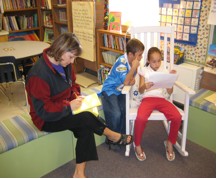


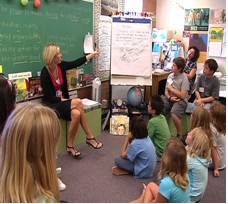

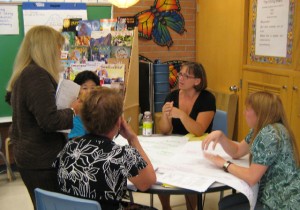
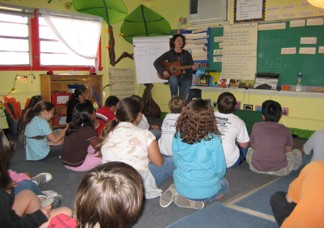
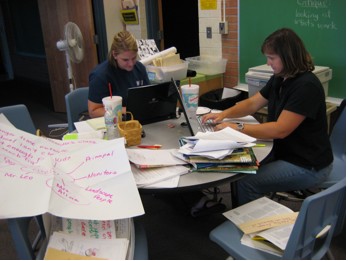
One thought on “WOW Stories: Connections from the Classroom”